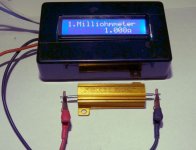Are you sure your QS205 has a separate speed sensor?
The QS205s (dunno which version or winding, but I think they're both the 50H stators) I have do not have separate speed sensors, but they do have temperature sensors.
Anything I were to hook up to them that read speed would be doing it using one of the regular hall sensors.
Regarding a speed sensor vs a hall sensor: A speed sensor (all the ones I've ever seen) uses separate magnets on the side cover, rather than the rotor magnets. So it will have a different pole count and thus different number of pulses per rotation (lots fewer) than the hall sensors. That should make it easy to tell the difference between a speed sensor wire and a hall sensor wire; just manually rotate the motor, with the hall signals connected to a powered up controller. Measure from ground to each hall signal, and count the pulses as you turn the wheel. You should get a couple dozenish for each hall signal, per wheel rotation. A speed sensor, when connected to one of the controller hall wires, will have a lot less pulses than that (actual number will depend on how many magnets are in the cover near the sensor, or wherever the sensor is placed).
I don't know if this is the case on your cabling, but most of the time a "clear" covered "gray" (silver) wire is a shield-ground wire, connecting to a braided or foil shield around a bunch of signal wires to keep electrical noise out of them. The shield is usually only connected at one end (so in this case, at the controller ground, not the motor hall ground). If this is how yours is wired, there will be no continuity for the clear/gray wires to any other wire in the cable, or any connection inside the motor (only to the shield around the wires, if there is one).
If your clear/gray wires are not shield ground wires, and are actually signal wires, and do not have hall signals on them, then they are probably for a thermistor signal.
I don't think my QS205s have dual thermistors to go with the dual halls--they only have one thermistor, whcih is wired to teh same ground as the halls, and then has it's own signal wire. I don't know what color the wires are, but I can take a look, since both stators are not inside covers ATM (only one even has a rotor or covers; the other is just a stator). IIRC one of the wire sets only has 5 wires (3 hall signals, power, and ground), and the other has 6 (because it has the thermistor too).
It may "stick" to surfaces enough to not separate when pulled, but it is nowhere near as good a bond as if everything were at the same, correct, temperature for long enough to allow good solder flow over all surfaces.











